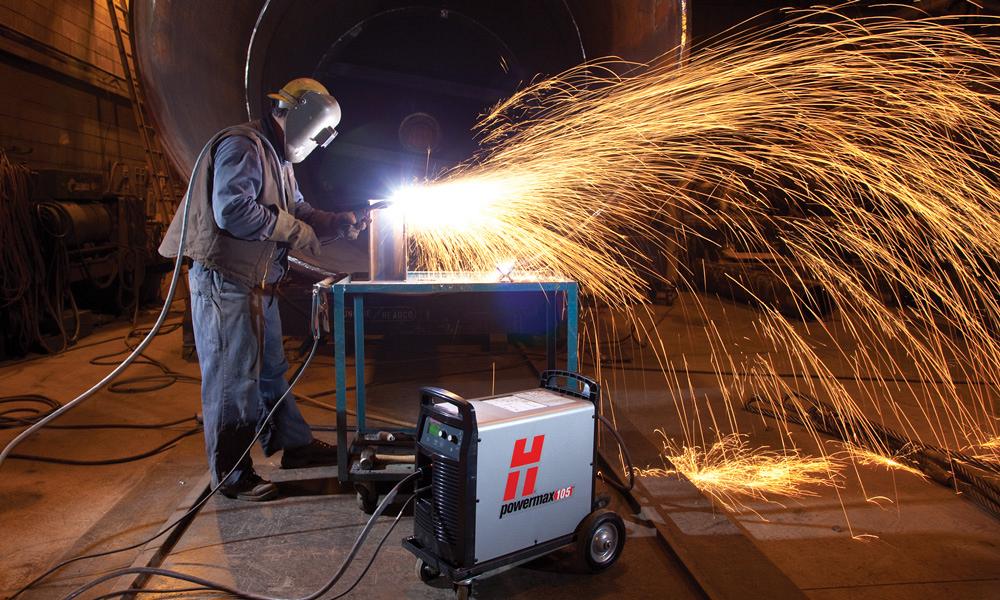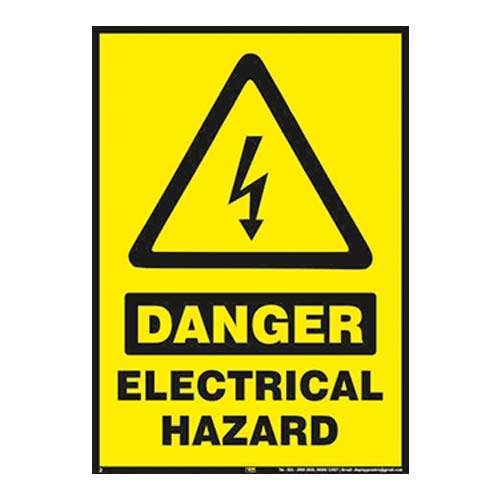Plasma cutters cut metals which conduct electricity with the jet of hot plasma. Metals including copper, aluminium, and stainless steel can all be cut with this method. It is quick and precise and used in various industries. However, it is important to be aware of the risks and dangers associated with plasma cutting.
To get started, make sure you have enough air and that your compressor is running. It should also be set at the correct pressure for the metal you are cutting. You should be able to find the right settings from welding information sites or the welding equipment supplier. You then must assess the risks and how you can prevent danger. Below are some of the ways which plasma cutting can be dangerous. However, if you are safe and use the correct protective equipment, these risks will be significantly minimised.
1. Fire and Heat Hazards
While you are working with a plasma cutter, there will always be hot metal and sparks. This can be especially bad when you are piercing the metal at first.
Wear dark glasses with side shield to protect your eyes. These must be safety approved. For added safety, we also recommend that you wear a welding helmet or face shield. Additionally, safety gloves and flame-resistant protective clothing are required. These shield your body from heat and sparks. For footwear, you can purchase leather boots or safety shoes which will be most effective.
The intense heat from the plasma cutter will easily cut materials and skin, so to prevent this, you must not hold on to the metals near the cutting path. Furthermore, stay away from the torch tip as the pilot arc will cause burns.
Anything flammable should be kept at least 35ft away from the site of work or protected with flame-proof shields and covers. It is also important to never use a plasma cutter where there may be flammable gases, dust, or vapours as it could result in an explosion. This will help plasma cutting become less dangerous as sparks will be less likely to catch fire.

2. Fumes, Dust & Gases from Plasma Cutters
When plasma cutting, fumes, dust, and gases will be created. These can cause risks including fume inhalation, gas inhalation, and gas combustion. These are all dangerous if not kept under control. If not, they may even be severe enough to cause long-term health problems. Ensure you are not working with your head in the fumes or breathing them in.
For further protection when working with coated metals, remove the coating from the area of metal being cut as this will reduce toxicity.
You can extract fumes even more by ventilating the area properly. Positioning a suction system or hood at the arc will extract fumes effectively. Plasma fumes for portable plasma cutters and lower powered plasma cutters can be easily controlled with local exhaust ventilation (LEV). For larger plasma cutters with mechanised systems, systems may need specifically designed for the machine. For example, it may be necessary to build chambers connected to the exhaust. This will result in more fumes being extracted. All systems need continued maintenance to ensure they are suitable and effective.
3. Electric Shock Hazards
Plasma cutting typically uses higher voltage that welding to start and maintain the arc. The voltage a plasma cutter requires is usually 110 to 400 VDC. This has dangers as can lead to shocks or burns when live electrical parts are touched. Therefore, check damage to these parts with every use and replace if needed.
Water can be dangerous when using electricity, so stand on a rubber mat or dry plywood which covers the whole area of work. If you can find a dry and non-flammable material to stand on you should use this. By insulating yourself in this way, you will lower the likelihood of an electric shock which could have been dangerous.
The voltage will be safe for cutting provided that all plasma arc cutting is grounded to national safety standards. However, plasma cutter operators should still regularly check that the ground conditions are efficient. Also, be certain that the electric parts are connected to a proper earth ground.

4. Plasma Cutters Gas Hazards
Gases which could be dangerous are used in plasma cutting. This is the case for all gas welding and cutting systems. Usually, compressed gases such as nitrogen gas cylinders are used. UK-based gas suppliers such as AGEquip sell these. Store these appropriately and safely at all times, and follow all safety instructions that they come with. You can use regulators to test the gases, however these must not be faulty and give an accurate reading. Keep the hose safe and suspended, otherwise, it could end up dragging along the ground. While this will prevent damage to the hose, it should still be inspected for leaks regularly.
Ready to Start Using Plasma Cutters?
Hopefully this has been helpful for you in answering your question of ‘Are Plasma Cutters Dangerous?’ There are ways to minimise the risks despite certain dangers being apparent in plasma cutting. Correct protective clothing for welding and cutting is one of the most important things to consider. You also need to be certain that equipment for plasma cutting meets national standards and regulations.
Tags: cuttingtools, diy, industry, powertools, safety, tools, welding